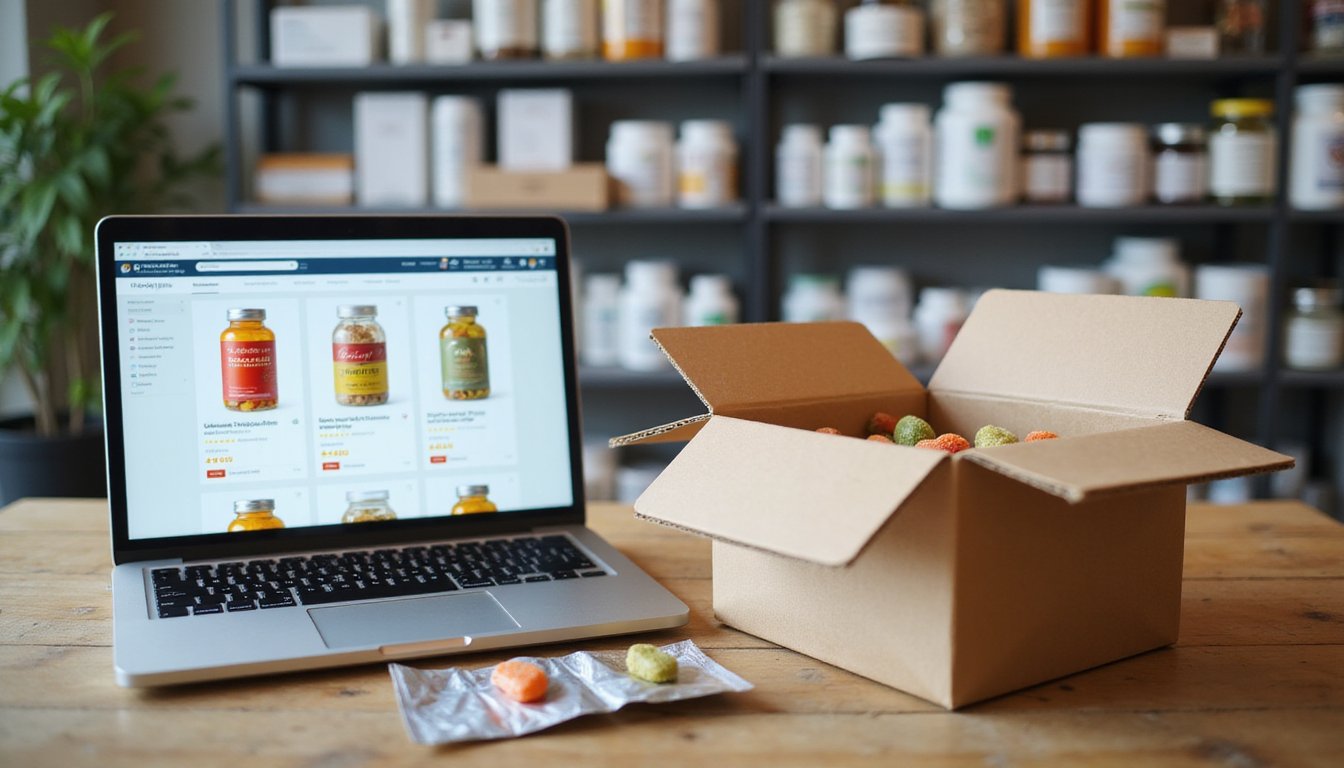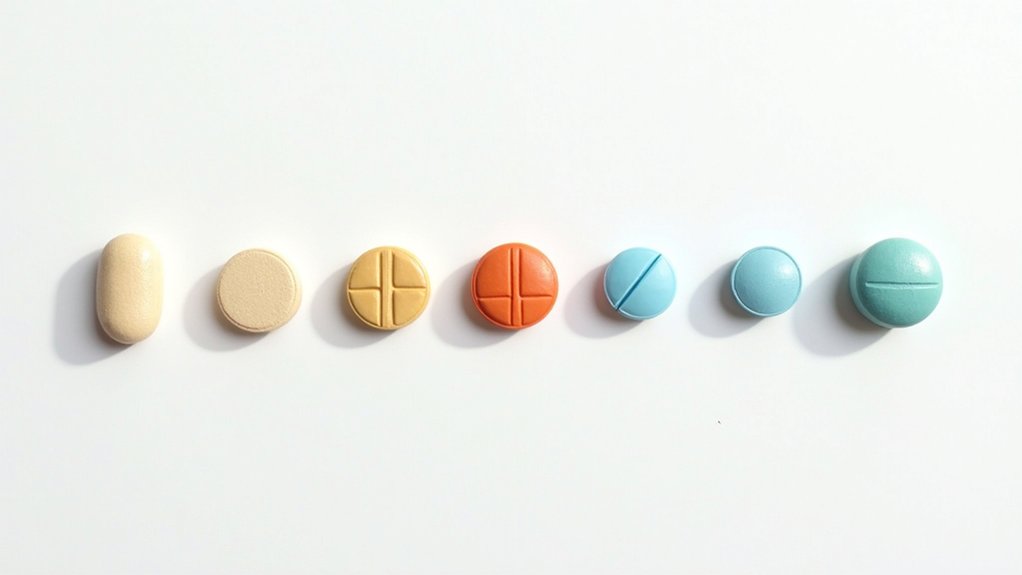The FDA has taken regulatory measures against concentrated 7-hydroxymitragynine (7-OH) products due to their potent opioid-like effects and associated public health risks. Recent actions include issuing warning letters to distributors, prohibiting the sale of 7-OH in dietary supplements and conventional foods, and recommending DEA scheduling under the Controlled Substances Act. The agency has also targeted misleading marketing practices and unauthorized sales through retail and online platforms.
Understanding 7-OH: A Potent Opioid Compound
 7-hydroxymitragynine (7-OH) is a minor natural alkaloid in kratom, but products on the market often contain chemically concentrated forms of this compound. Research has shown that 7-OH binds strongly to mu-opioid receptors and, in preclinical studies, appears more potent than morphine. This creates a high risk of dependency and abuse.
7-hydroxymitragynine (7-OH) is a minor natural alkaloid in kratom, but products on the market often contain chemically concentrated forms of this compound. Research has shown that 7-OH binds strongly to mu-opioid receptors and, in preclinical studies, appears more potent than morphine. This creates a high risk of dependency and abuse.
Currently, 7-OH is not permitted in dietary supplements or foods, and no approved drugs contain it. Despite these restrictions, concentrated 7-OH products continue to surface in the U.S. market, raising regulatory and public health concerns.
FDA’s Regulatory Actions and Recommendations
To address 7-OH risks, the FDA has taken several steps:
-
Warning Letters were issued in June and July 2025 to companies unlawfully marketing concentrated 7-OH.
-
On July 29, 2025, the FDA recommended the DEA scheduling of concentrated 7-OH under the Controlled Substances Act.
-
The FDA published consumer education materials highlighting risks and urging the public to avoid mislabeled products.
The DEA is now reviewing the scheduling recommendation. Its process includes a scientific review, a proposed rule, and a public comment period before any final scheduling decision.
Public Health Risks and Safety Concerns
 Concentrated 7-OH products raise significant safety concerns:
Concentrated 7-OH products raise significant safety concerns:
-
High potency compared to morphine in animal models.
-
Strong abuse and dependence potential.
-
Misleading marketing, often disguised as kratom extracts.
-
Appealing youth-targeted formats such as gummies, shots, and ice cream products
The combination of widespread retail access and deceptive labeling creates a substantial risk for misuse, accidental exposure, and addiction.
Marketing Tactics Targeting Youth
Investigations show that 7-OH products are often packaged in flavored gummies, drinks, and dessert-style items designed to attract young consumers. These products are widely sold in gas stations, vape shops, and online stores, often with inaccurate labeling about their contents. The FDA has flagged this as a major concern because such marketing increases the risk of youth exposure to potent opioid-like compounds.
Market Availability and Distribution Channels
 Despite regulatory warnings, concentrated 7-OH products remain accessible through:
Despite regulatory warnings, concentrated 7-OH products remain accessible through:
-
Online marketplaces where items can be purchased anonymously.
-
Gas stations, vape shops, and convenience stores across the U.S.
Vendors frequently misrepresent 7-OH as natural kratom, complicating consumer awareness and enforcement efforts. This unregulated distribution highlights the challenges of removing 7-OH products from the market.
Federal Scheduling Process Under CSA
Under the Controlled Substances Act (CSA), the DEA must evaluate whether substances should be scheduled based on medical use, abuse potential, and public health impact. The process involves:
-
FDA’s scientific and medical evaluation.
-
DEA’s scheduling review and proposed rule.
-
Public comment period before a final decision.
If DEA finalizes Schedule I classification, concentrated 7-OH would be federally prohibited, making its sale, distribution, and possession illegal nationwide.
Healthcare Provider Guidance and Resources
The FDA has provided resources for healthcare professionals, but has not issued formal treatment guidelines. Current recommendations include:
-
Reporting adverse events through FDA MedWatch.
-
Documenting suspected 7-OH exposure in patient assessments.
-
Educating patients on the differences between natural kratom leaf and concentrated 7-OH products.
These resources help healthcare providers respond to potential 7-OH cases and contribute to monitoring efforts.
Consumer Protection and Warning Measures
The FDA is expanding consumer safety initiatives to reduce risks associated with 7-OH products:
| Protection Measure | Implementation Strategy |
|---|---|
| Public Alerts | Digital and print safety warnings |
| Retail Monitoring | Store inspections and enforcement |
| Online Surveillance | Tracking e-commerce marketplaces |
| Consumer Education | Safety campaigns and guidance |
| Warning Systems | Real-time alert networks |
These measures aim to raise public awareness about mislabeled products and protect vulnerable populations from exposure to dangerous substances.
Impact on the Kratom Industry
Although FDA actions focus on concentrated 7-OH, the broader kratom industry is also affected:
-
Vendors must conduct stricter testing to ensure products are free of concentrated 7-OH.
-
Quality control standards are being developed to maintain legitimacy.
-
Traditional kratom suppliers face greater scrutiny as regulators work to distinguish natural kratom from illicit 7-OH derivatives.
Future Enforcement and Monitoring
Enforcement will require coordination between the FDA, DEA, and state authorities. Future strategies include:
| Enforcement Area | Key Strategy |
|---|---|
| Online Sales | Digital monitoring systems |
| Retail Outlets | Regular inspections |
| Product Testing | Laboratory verification |
| Distribution | Supply chain tracking |
Enhanced testing and monitoring will help authorities distinguish between natural kratom and concentrated 7-OH while addressing illegal distribution.
The FDA is focusing its efforts on concentrated 7-OH products, not natural kratom leaves. Through warning letters, public education, and a recommendation to the DEA for scheduling, the agency aims to protect consumers, particularly youth, from deceptive, high-risk opioid-like products. The DEA’s pending decision will determine whether 7-OH is federally scheduled under the CSA.
Frequently Asked Questions
How long does 7-OH stay detectable in urine and blood tests?
The detection window for 7-OH is not well defined. Routine drug tests do not screen for it, but advanced laboratory techniques such as LC-MS/MS can detect it in biological samples. Detection length varies depending on dosage, frequency of use, and metabolism.
Can drug-sniffing dogs detect 7-OH products during searches?
Currently, there is no evidence that detection dogs are trained to identify 7-OH. Canine programs typically target drugs such as heroin, cocaine, and methamphetamine. Specialized training would be required, but there is no confirmation that this is being done.
What withdrawal symptoms occur when stopping regular 7-OH use?
Withdrawal from 7-OH resembles that of opioids and may include muscle aches, sweating, nausea, anxiety, and insomnia. The severity depends on dosage and frequency of use. Medical supervision is recommended for those discontinuing heavy use.
Are there specific drug interactions between 7-OH and prescription medications?
Research is limited, but due to its opioid activity, 7-OH may interact dangerously with CNS depressants such as benzodiazepines, alcohol, or other opioids. These combinations increase the risk of overdose and respiratory depression. Patients should consult a medical professional before using any substance containing 7-OH.
What emergency treatments are available for 7-OH overdose situations?
Treatment follows standard opioid overdose protocols. Naloxone can reverse the effects, while supportive care may include airway management, oxygen therapy, and IV fluids. Immediate medical attention is critical in suspected overdose cases.






